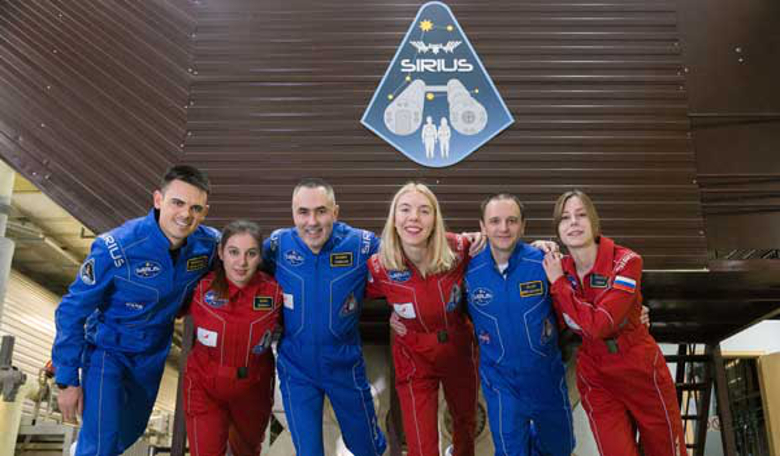Shut away in a biomedical lab in Russia, are three female and three male ‘cosmonauts’ who are experiencing what it must be like to complete a journey to the Moon by simulating a number of experiments in a special habitat and locking themselves away in total isolation for 122 days.
The six team members are part of the SIRIUS (Scientific International Research in Unique Terrestrial Station) missions; a series of isolation studies that are intended to subject a select group of people to the rigours of extended stays in space.
The first experiment took place in 2017 and following the latest 2019 study, which is being held at the Institute of Biomedical Problems of the Russian Academy of Sciences (IBMP RAS) in Moscow, two further experiments are also scheduled; one in 2020 for eight months and another in 2021 for twelve-months.
Returning to the Moon has become the focus for many, if not all of the major space agencies, though this time around people want to stay longer. Talks of extended visits and setting up lunar bases are now the new agenda, but so far, the longest anyone has spent poking around on the Moon is just under 75 hours and no-one has made a return journey after leaving our nearest celestial neighbour.
Spending months at a time on the Moon will no doubt push any lunar explorer to the limit, not only physically, but mentally. As such before any meaningful research can be conducted, crew members must be trained to complete such a rigorous mission.
“Only biomedical research of this nature will make future journeys to other celestial bodies possible. Six of these experiments have been developed in Germany,” says Christian Rogon, SIRIUS-19 Project Manager at the German Aerospace Center (Deutsches Zentrum für Luft- und Raumfahrt; DLR), who are participating in the SIRIUS-19 isolation study.
“For this, as in SIRIUS-19, they [the astronauts] must be able to live for a long time under conditions in which they will be subjected to a mixture of psychological stress, due to total isolation, and a high degree of pressure to perform well. Only in this way can we learn more about the interaction of body and mind in isolation,” Rogon explains.
What better way to learn about the isolation effects the team might experience than to simulate a journey to an orbital lunar station complete with a simulated lunar surface landing.
Before the landing can take place however, the team will start their expedition with a three day journey and enter a lunar orbit prior to docking with the station. Once on board in their new living quarters, the team, made up of Reinhold Povilaitis, Allen Mirkadyrov, Daria Zhidova, Anastasia Stepanova, Stephania Fedeye, and Evgeny Tarelkin, will go about business as normal – as normal as you can get when you are an astronaut living on a space station – by engaging in daily life and performing numerous experiments.
The crew have a range of backgrounds from test researchers (Povilaitis, Mirkadyrov and Stepanova) to flight engineers (Zhidova) and a crew doctor (Fedeye). Tarelkin, who will lead the team, is a Russian cosmonaut who has already spent six months aboard the International Space Station when he made his first flight into space in October 2012 as a member of the Soyuz TMA-06M crew.
Some of the experiments that will be conducted include effective training methods to counteract the reduction in muscle and bone mass that humans experience in space, sleep studies to see how crew members perform when subjected to little or no sleep and how the crew react to living in small, relatively inescapable spaces for long periods of time.
“Since the monotony of working in a very limited space can become a major challenge, the crew will also have to respond to unexpected technical failures and malfunctions, such as a five-day break in communications with ‘ground control’,” Rogon explains. Radio communication will also emulate real lunar-Earth situations and generally be delayed by five minutes in each direction.
To keep supplies topped up on this expedition, a space freighter will deliver food and consumables to the orbital lunar station every 30 days.
Then, exactly halfway through the SIRIUS isolation study, four of the team will land on the lunar surface in a small capsule. “Once there, they will carry out several ‘Moon walks’ while wearing spacesuits, collect samples and prepare a ‘settlement’ on the Moon – a very special experience,” Rogon emphasises.
The other two cosmonauts will stay behind in the orbital lunar station and monitor ground events.
Although the cosmonauts are either US or Russian citizens, along with NASA and DLR, the French space agency CNES is also participating in this latest study. The European Space Agency (ESA) is expected to join in with the simulated adventures in the 2021 experiment.











